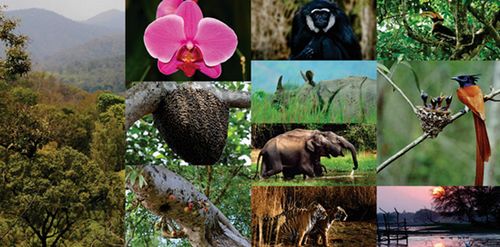Trees at Risk: Challenges of Global Canopy Ecology and Conservation has been recently published by Springer in New York. The book is co-edited by Margaret Lowan, Soubadra Devy, and T. Ganesh. At the invitation of Margaret D. Lowman, Prof. Liu Wenyao and Dr. Song Liang of Xishaungbanna Tropical Botanical Garden (XTBG) contributed a chapter entitled "Potential Impacts of Global Changes on Epiphytic Bryophytes in Subtropical Montane Moist Evergreen Broad-Leaved Forests, SW China" to the book. Subtropical montane moist evergreen broad-leaved forests (MMEBF) are a special habitat harbored a myriad of epiphytic bryophytes and lichens, which play an important role in the hydrology and mineral cycling of the whole forest ecosystems. Due to their close dependence on atmospheric conditions, epiphytic bryophytes are suggested to be sensitive to global environmental changes such as forest degradation, global warming, and enhanced N pollution, but empirical evidence remains scarce. To assess the fate of epiphytic bryophytes under global changes, we reviewed the three experiments that had been conducted in the subtropical montane forest recently, combined with some other interesting studies related to this topic. In MMEBF, forest degradation resulted in major loss of species richness of epiphytic bryophytes; the decrease of epiphytic bryophytes in the secondary forest may be caused by the changes of canopy structure, microclimate, and host characteristics. Even slight changes in climate resulted in remarkably reduced rates of growth and detrimental effects on the vitality of the two transplanted bryophyte species. With the prediction that climate conditions would be warmer and drier, epiphytic bryophytes may be negatively affected or even severely damaged in the future in MMEBF. N addition had significantly negative effects on species richness and cover of the epiphytic bryophyte community; the decline of some epiphytic bryophytes under relatively high N input may result from detrimental effects on degradation to photosynthetic pigments. Based on current knowledge it is likely that epiphytic bryophytes are currently at risk of decline to global changes and often difficult to recover once they have been destroyed. Link: http://link.springer.com/chapter/10.1007/978-1-4614-7161-5_16 
|

